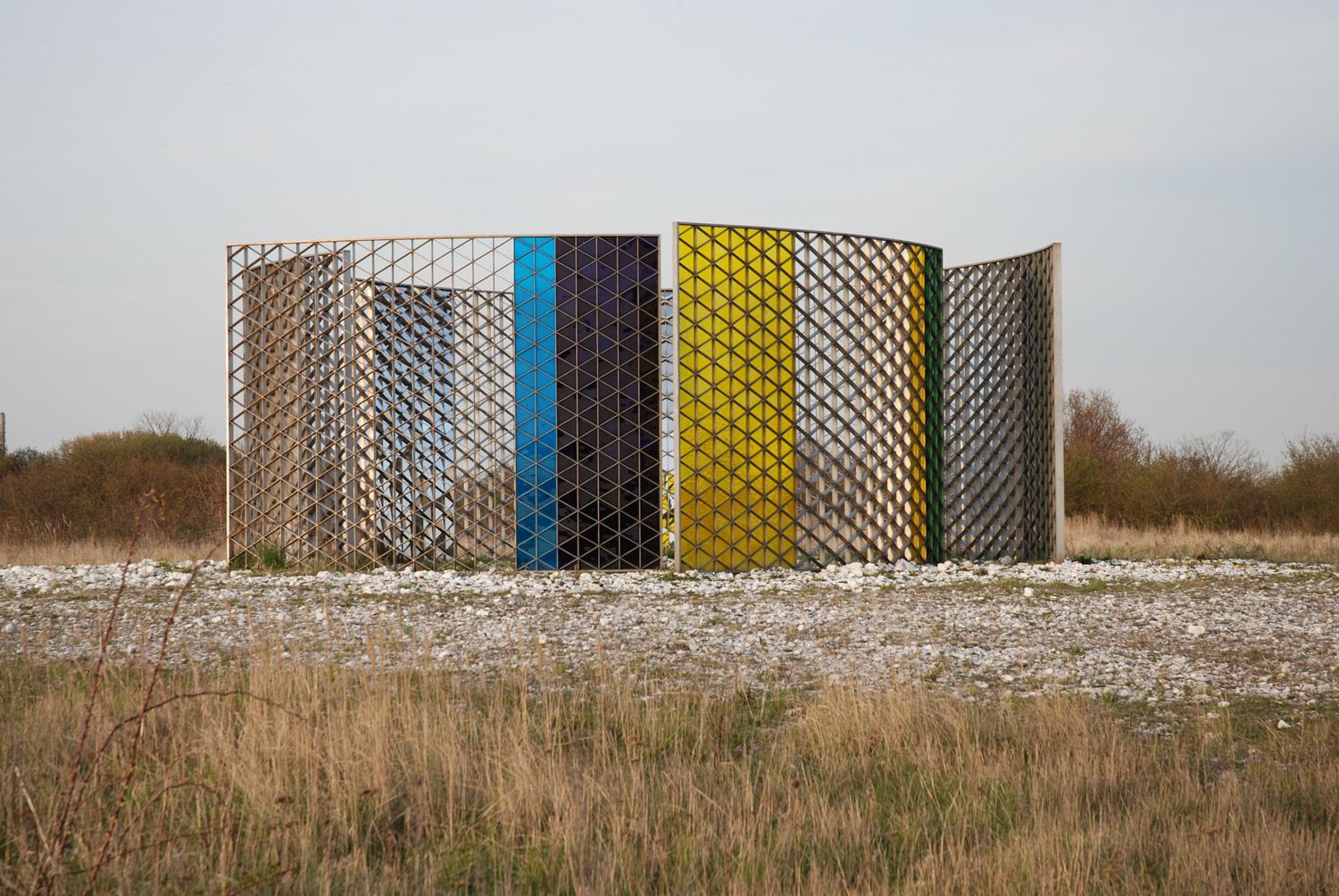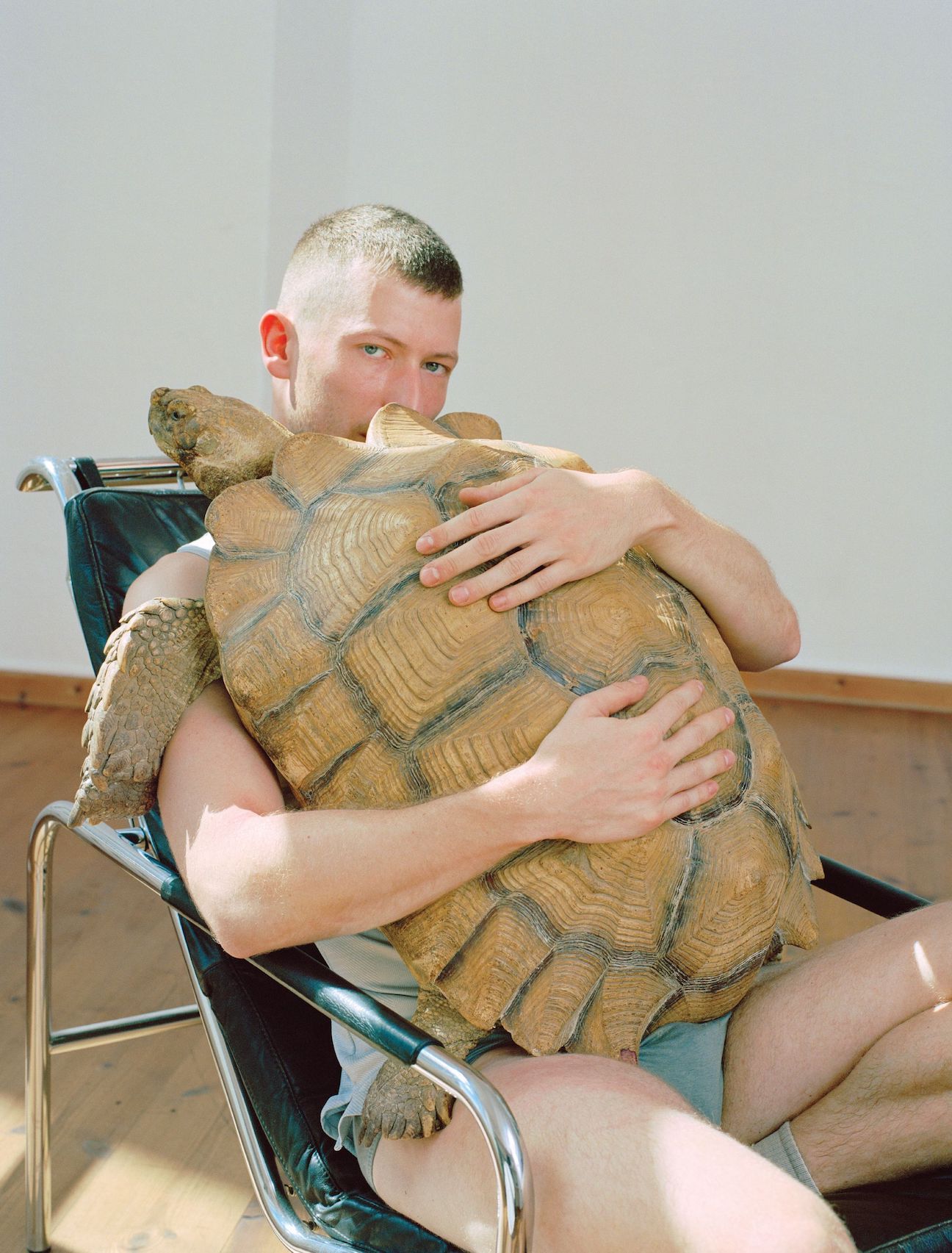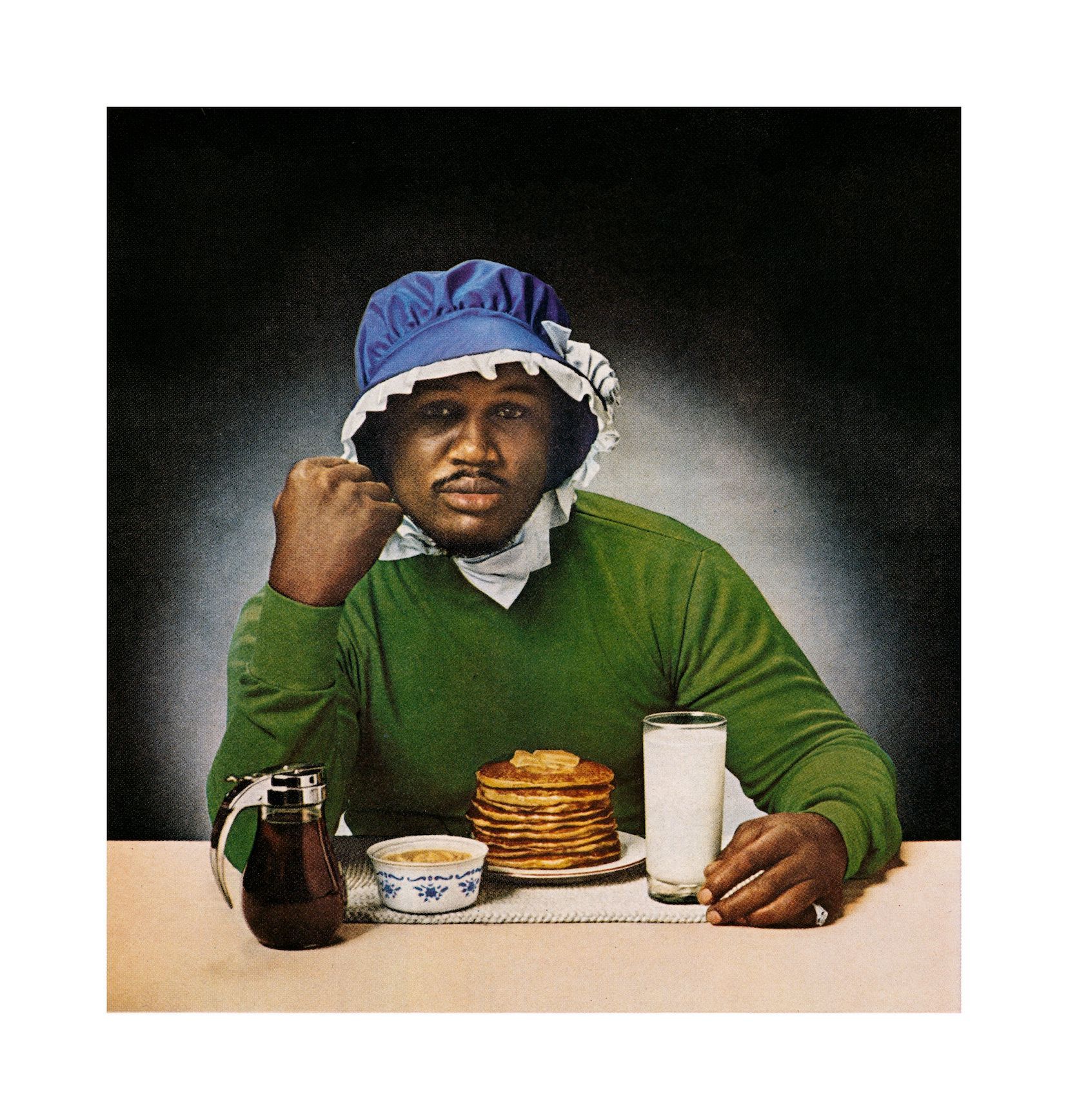DAVID OSTROWSKI Brings Bauhaus to Warsaw’s Galeria Wschód
|Anneli Botz
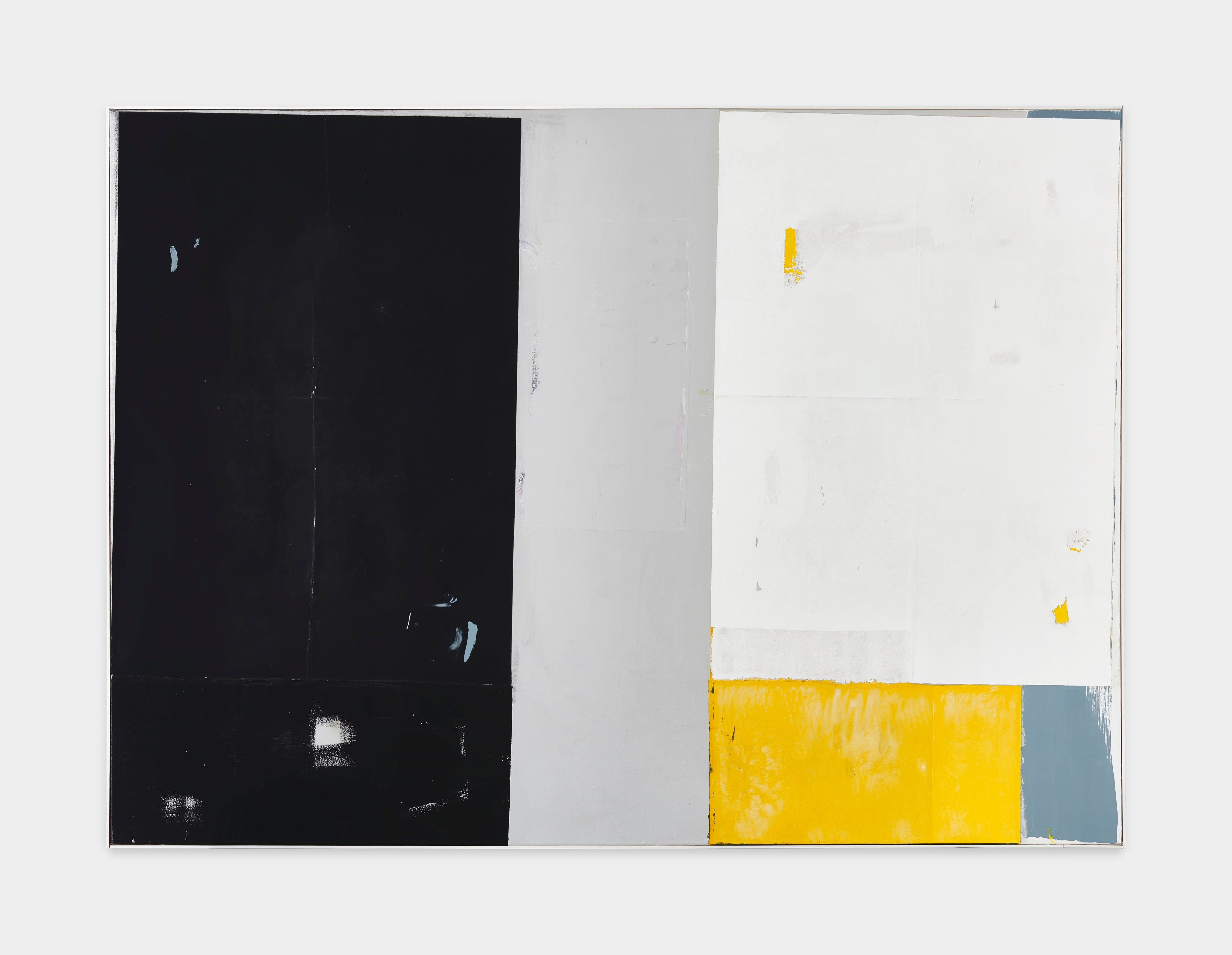
David Ostrowski is best known for his large abstract paintings, works which combine a minimalistic use of colors with accentuated gestures, often stemming from the use of spray cans and a formalistic approach to shape. A former student of Albert Oehlen and graduate of the Kunstakademie Düsseldorf, Ostrowski is also known for his love for the letter F and dislike for appearing in public.
After a productive and celebrated early career, Ostrowski, who is 37 and lives in Cologne, has been off the radar of late. The birth of his first child has kept him busy. Now he is back with a new body of work and two shows – the first of which, “The Warsaw Pavilion,” opens in Warsaw on October 27 at the progressive gallery space Wschód, founded by the gallerist Piotr Drewko in 2017. The show, which draws inspiration from the Bauhaus movement, provides an interesting correspondence with the architecture of the space – which also alludes in some way to Ostrowski’s own past.
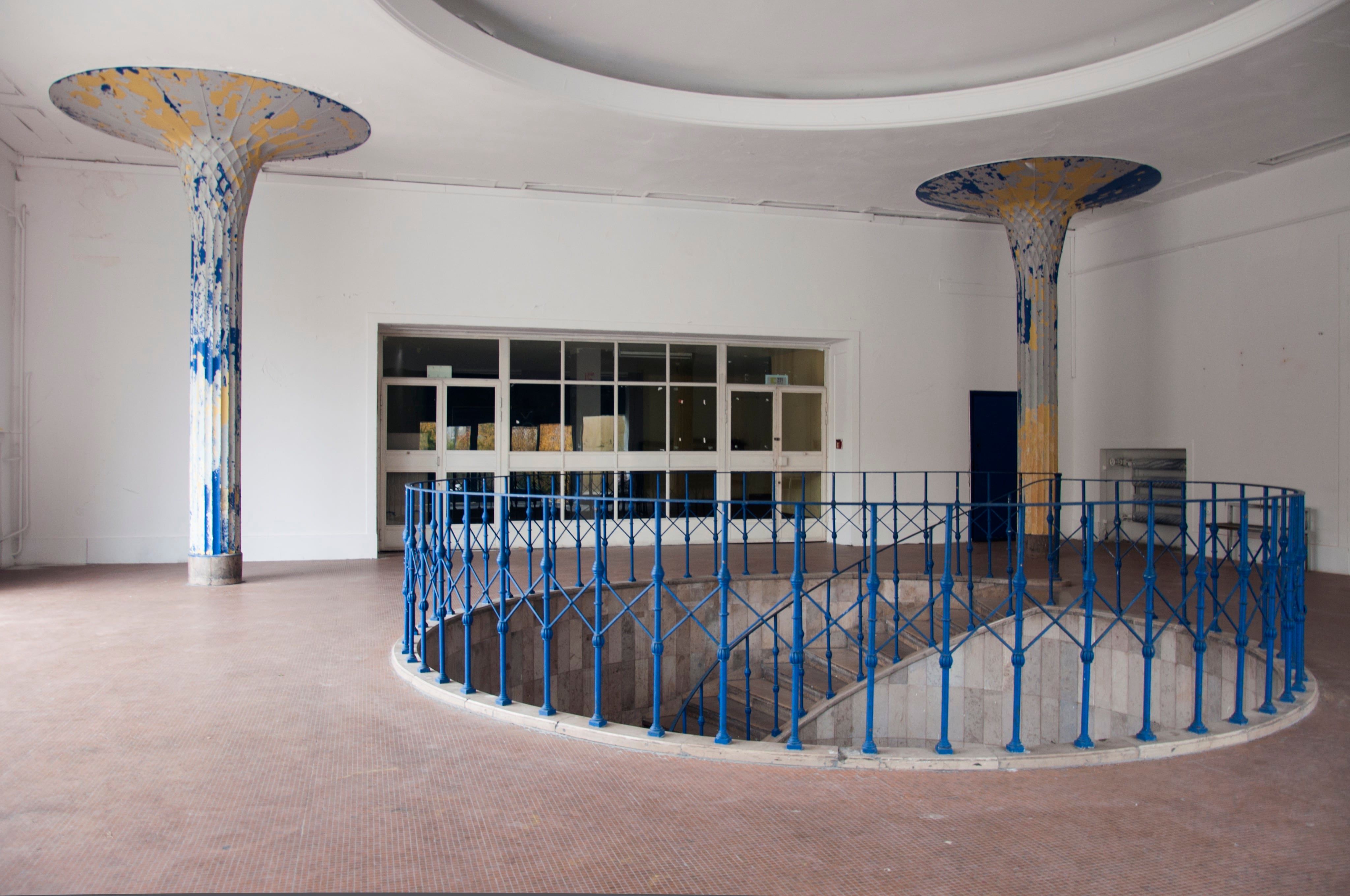
Anneli Botz: This fall you’ll be showing new work in two very different spaces. First, with your gallery Sprüth Magers in London – second with Wschód, a young gallery in Warsaw. How will your approach to each show differ?
David Ostrowski: In London, I’m presenting a body of work that deals with the color red. I’ve been seeing red for a while now – it appeared in my paintings as early as 2009, but then blue got in the way. Now it was finally time to look at red a little further. What I will be showing in Warsaw are pieces that are inspired by Bauhaus architecture.
Is there a special excitement about working with a young gallerist such as Piotr?
I really enjoy working on projects with young people. There’s a certain optimism and thirst for action – and also more naivety. It is a challenge to create something great without large funds, and a lot of what happens is unpredictable. All of this makes it more exciting and somehow reminds me of the days just after I finished art school. Initially, Piotr had invited me to participate in his publication Spoilage, which was a project conceived of as an exhibition, translated into a publication (an exhibition that never happened). Shortly after that, he asked me to do a solo show in his gallery Wschód. My family is from Warsaw, and I have never exhibited there, so that was appealing, too. The building in which the exhibition space is located is from the 1950s and marks a synergy between Bauhaus and Brutalist architecture. The building itself used to house the largest printing company in communist Poland. The company went bankrupt in 2010.
Your recent work is inspired by Ludwig Mies van der Rohe and the Bauhaus movement. How did architecture influence the work?
Bauhaus is about clear lines and form. The most beautiful building I know is Mies van der Rohe’s Barcelona Pavilion. It is this kind of atmosphere which I try to express through painting, by means of hardship and misery. Misery is the painterly aspect that I bring into it.
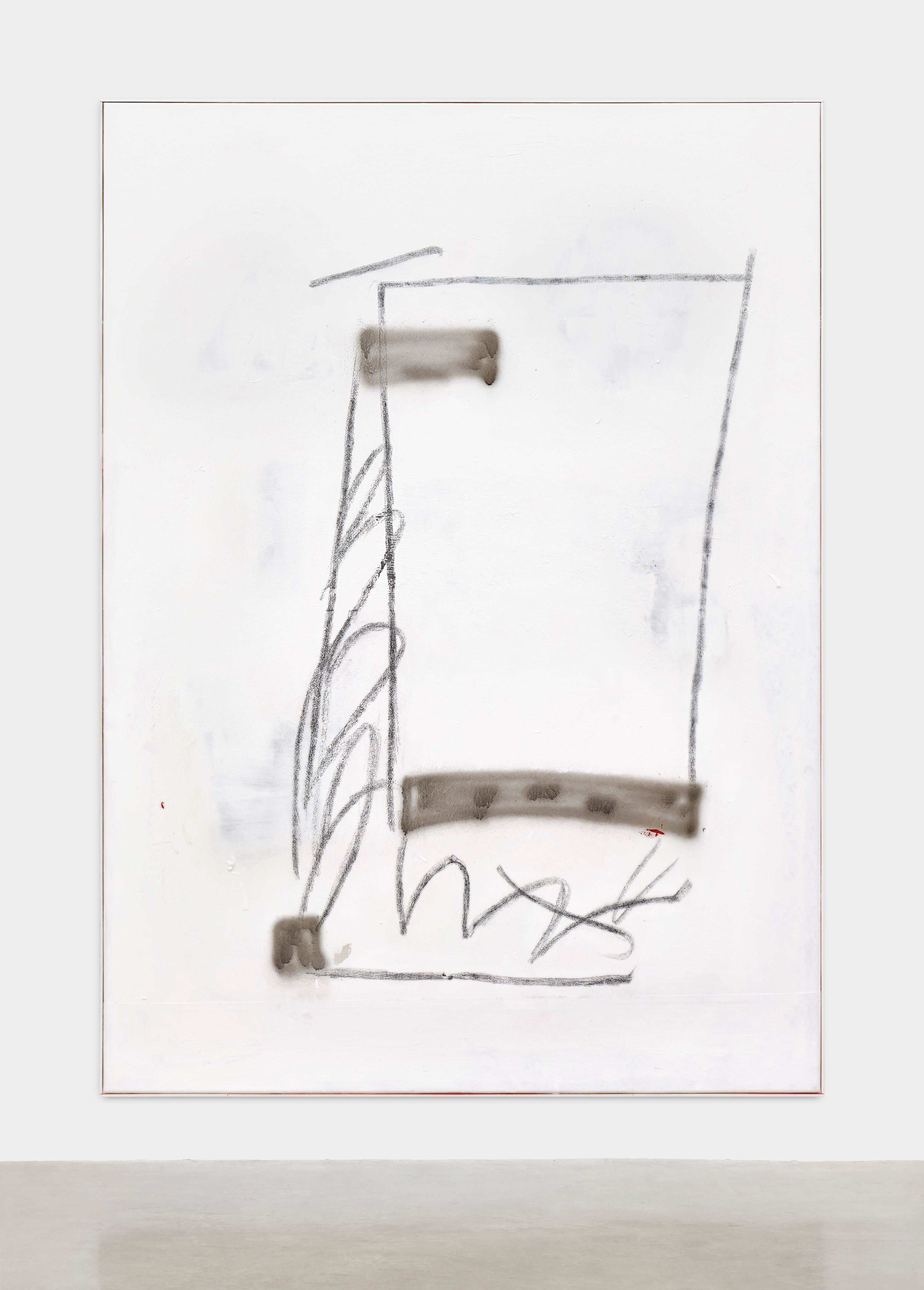
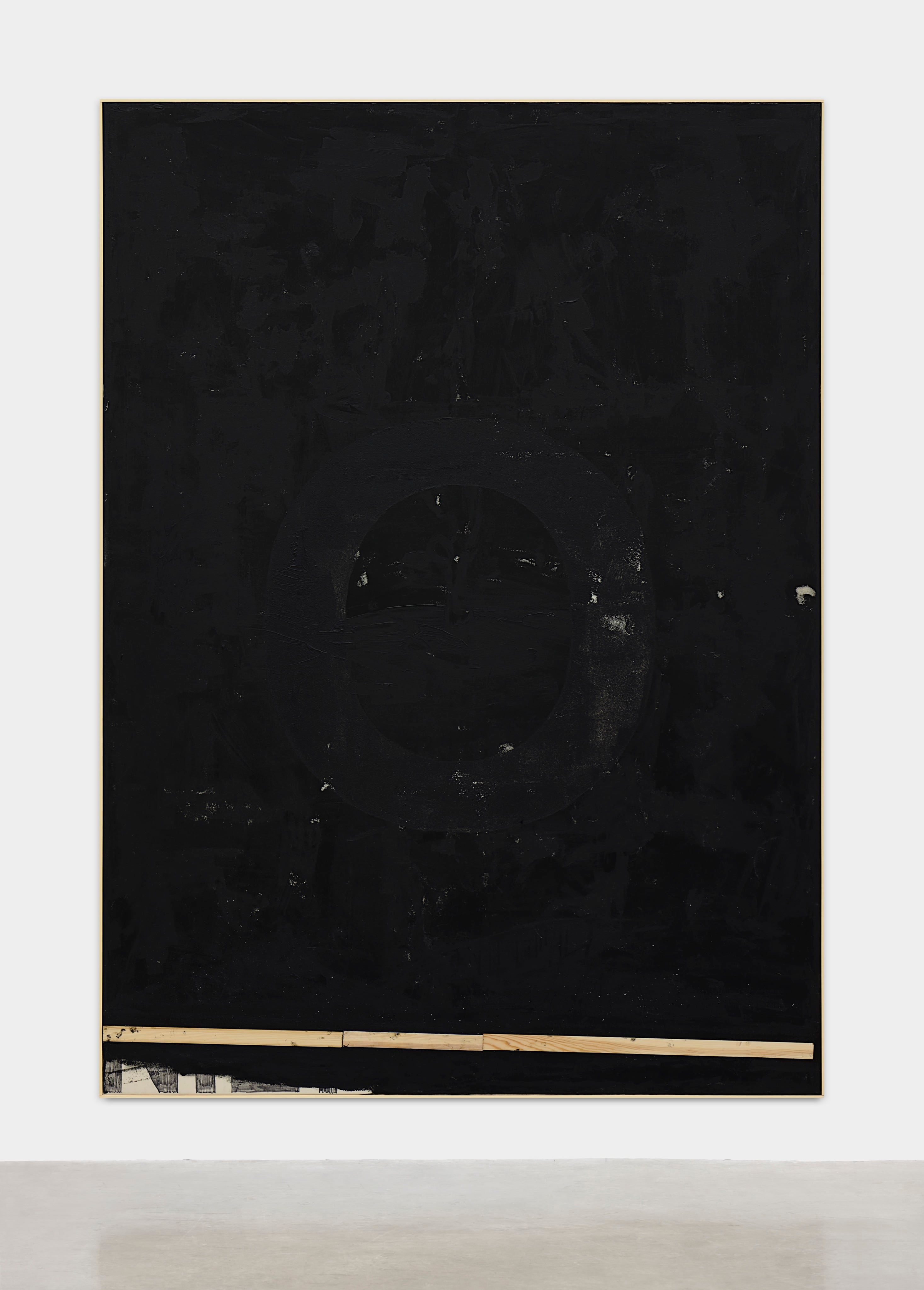
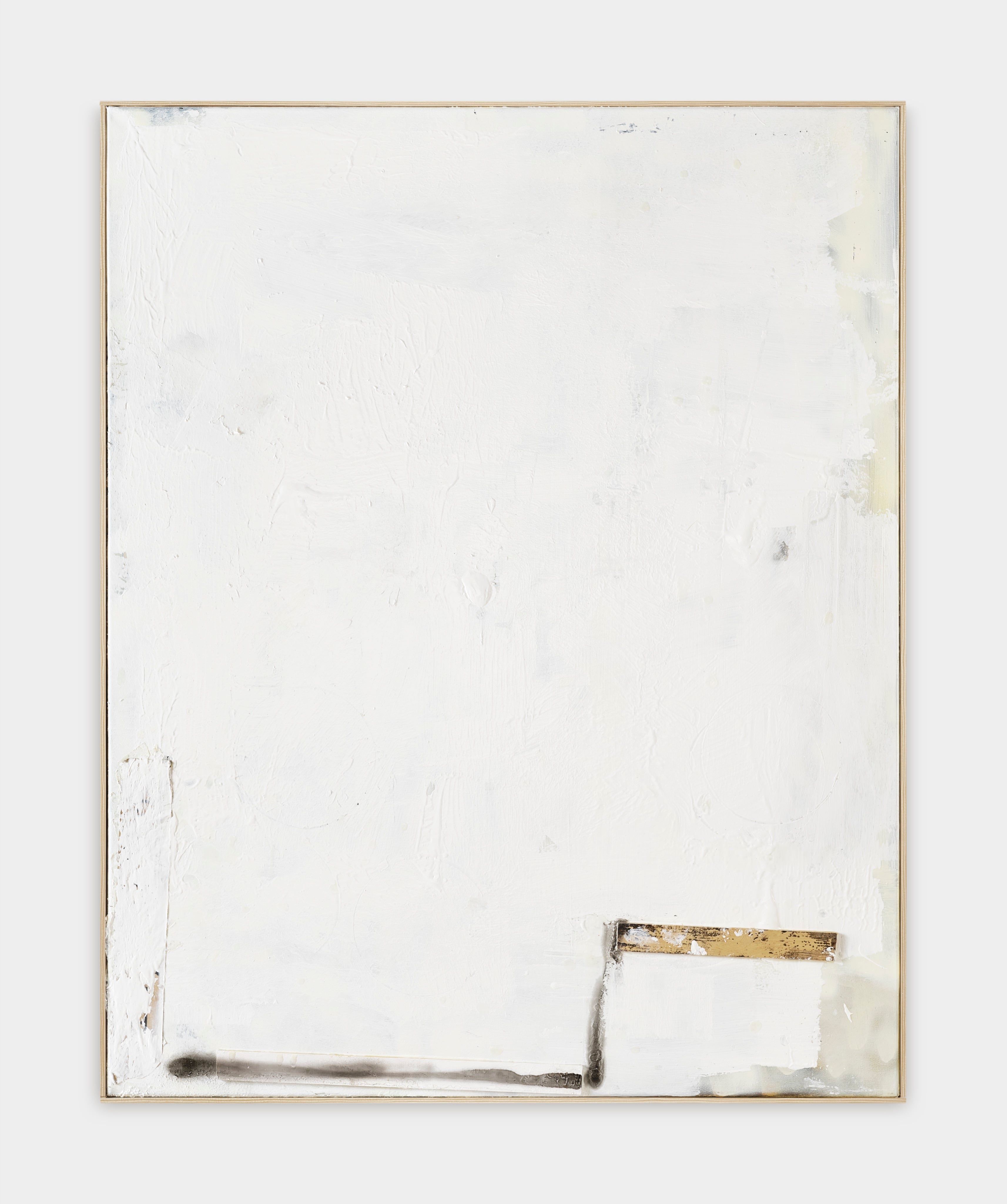
Like Mies van der Rohe, you have questioned the classical use of space, like the need for walls to present artwork. I remember shows in the past where large paintings were often hung free within the exhibition space, like floating walls. Does art need walls?
Sometimes they can help.
But where do you draw parallels to van der Rohe’s ideas in your current work, also in terms of your use of material?
He got that from me! [Laughs] With all due respect, I have been doing this for years.
As a painter, I always try to also work architecturally, by integrating right angles and straight lines into my works.
What about the big letter W that dominates one canvas: is there some reference to the serial character of a logo, to serial production, something the Bauhaus movement opposed?
There are certain letters I find attractive and elegant. The letter F is my favorite letter and has prefixed nearly every title I have given an artwork since 2009. There was a brief moment when it was an H, but I was clearly mistaken. This time I wanted to give W a try. I often strive to paint forms that I have not seen in this way before. There is this puff from the spray can that I keep on painting on the canvas in a more or less similar way. A while ago, I noticed that this form resembles the curved form of Marcel Breuer’s cantilever chairs. We have six fakes at home.
Do you perceive your paintings as emotional?
Yes, which is why I often find it hard to let go of them.
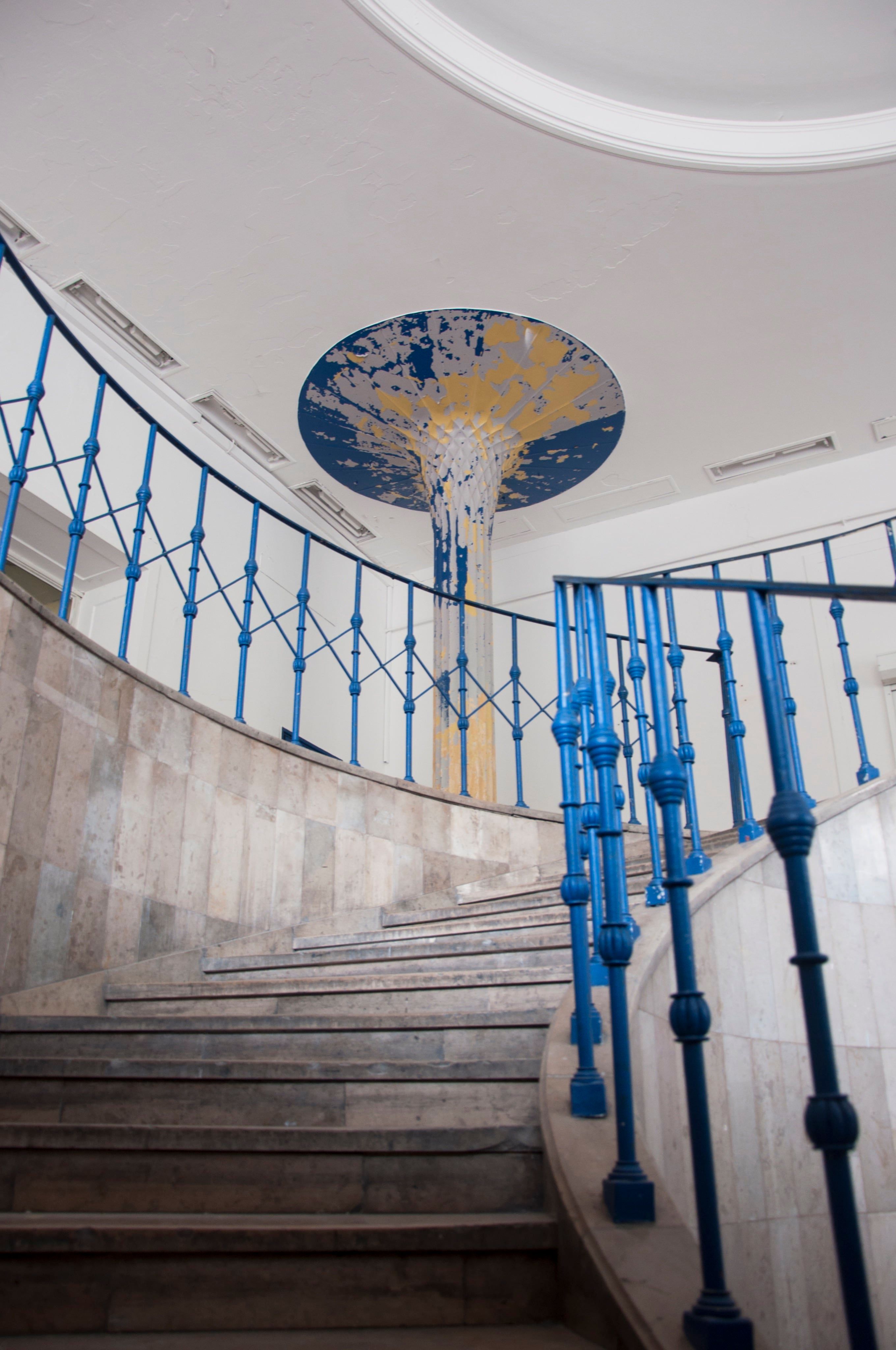
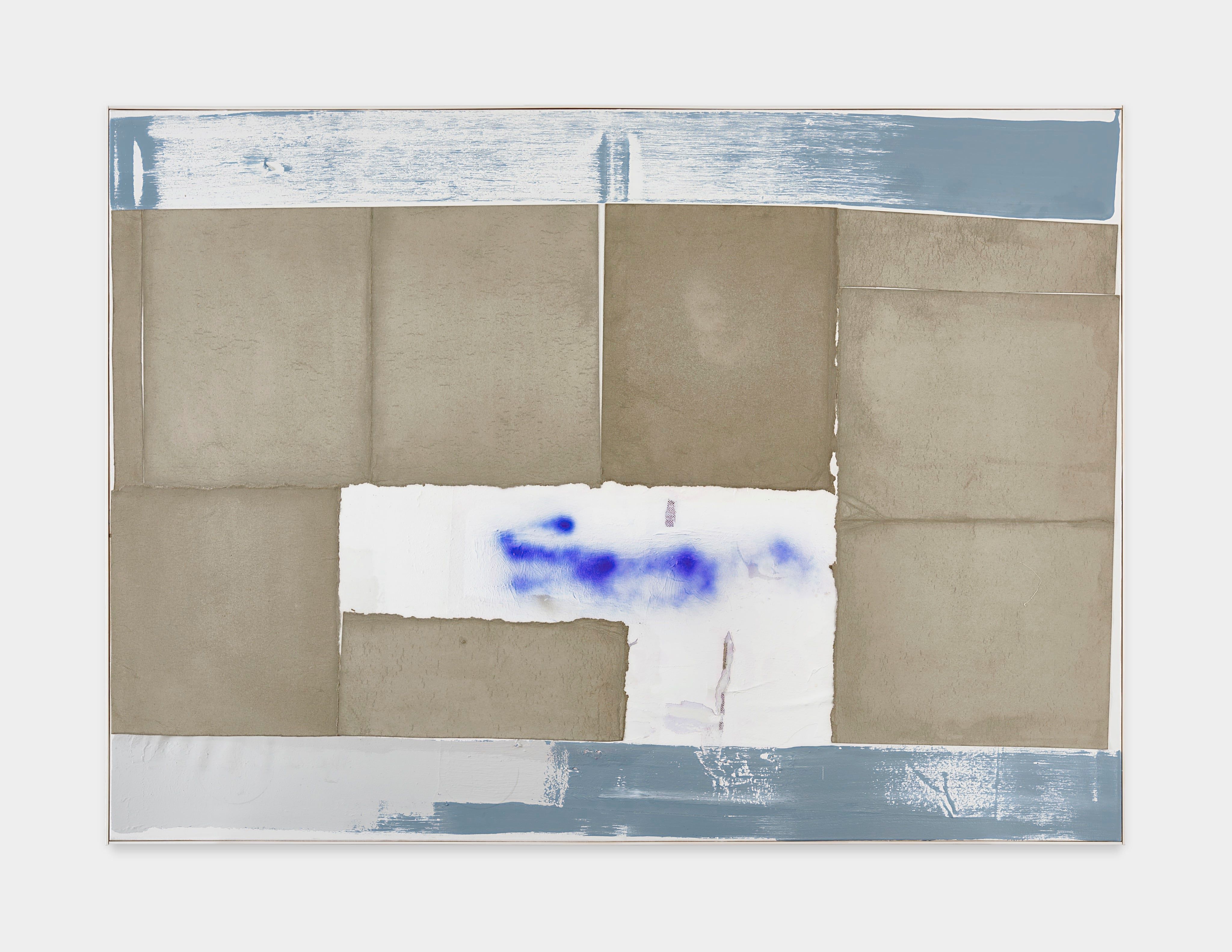
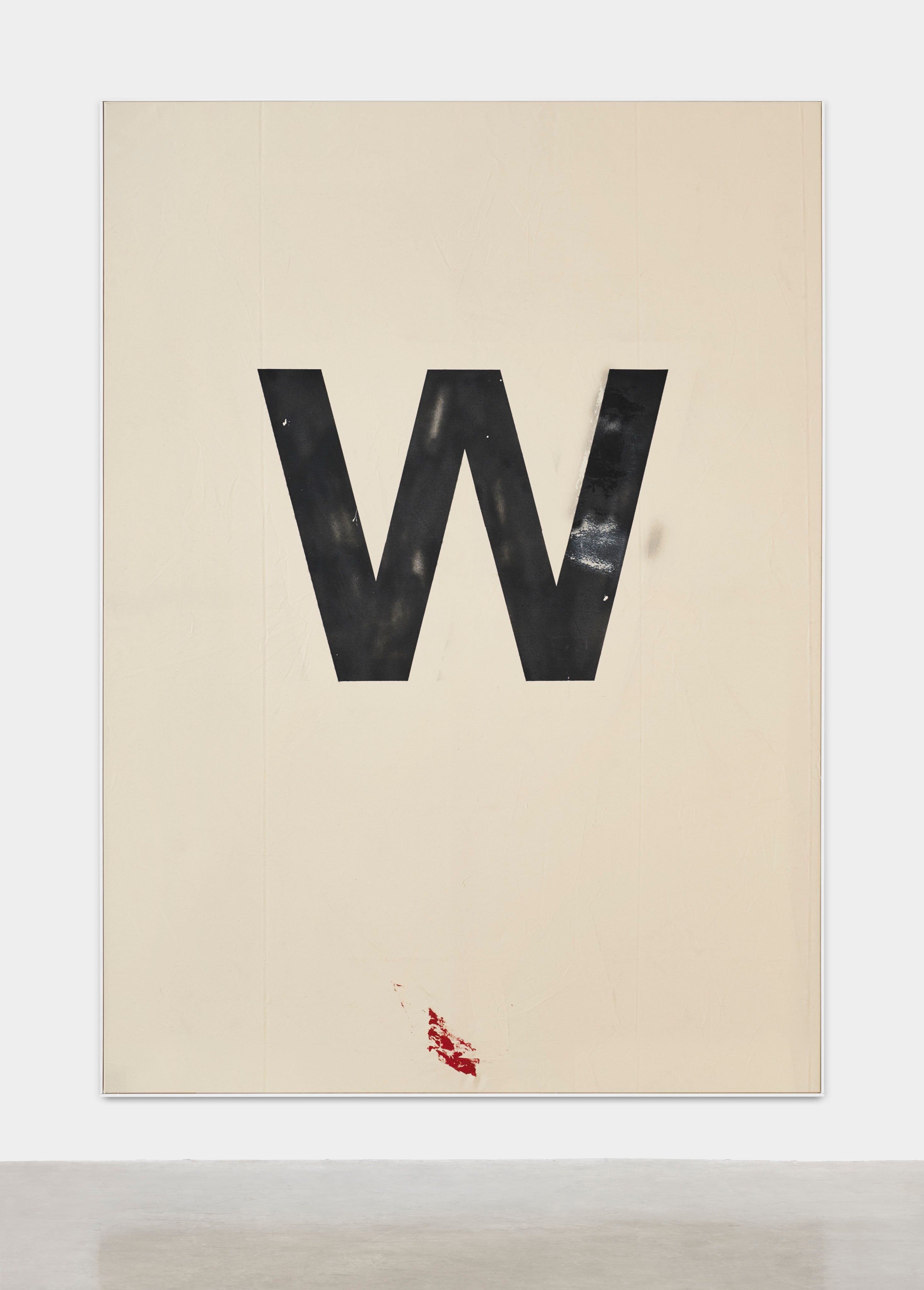
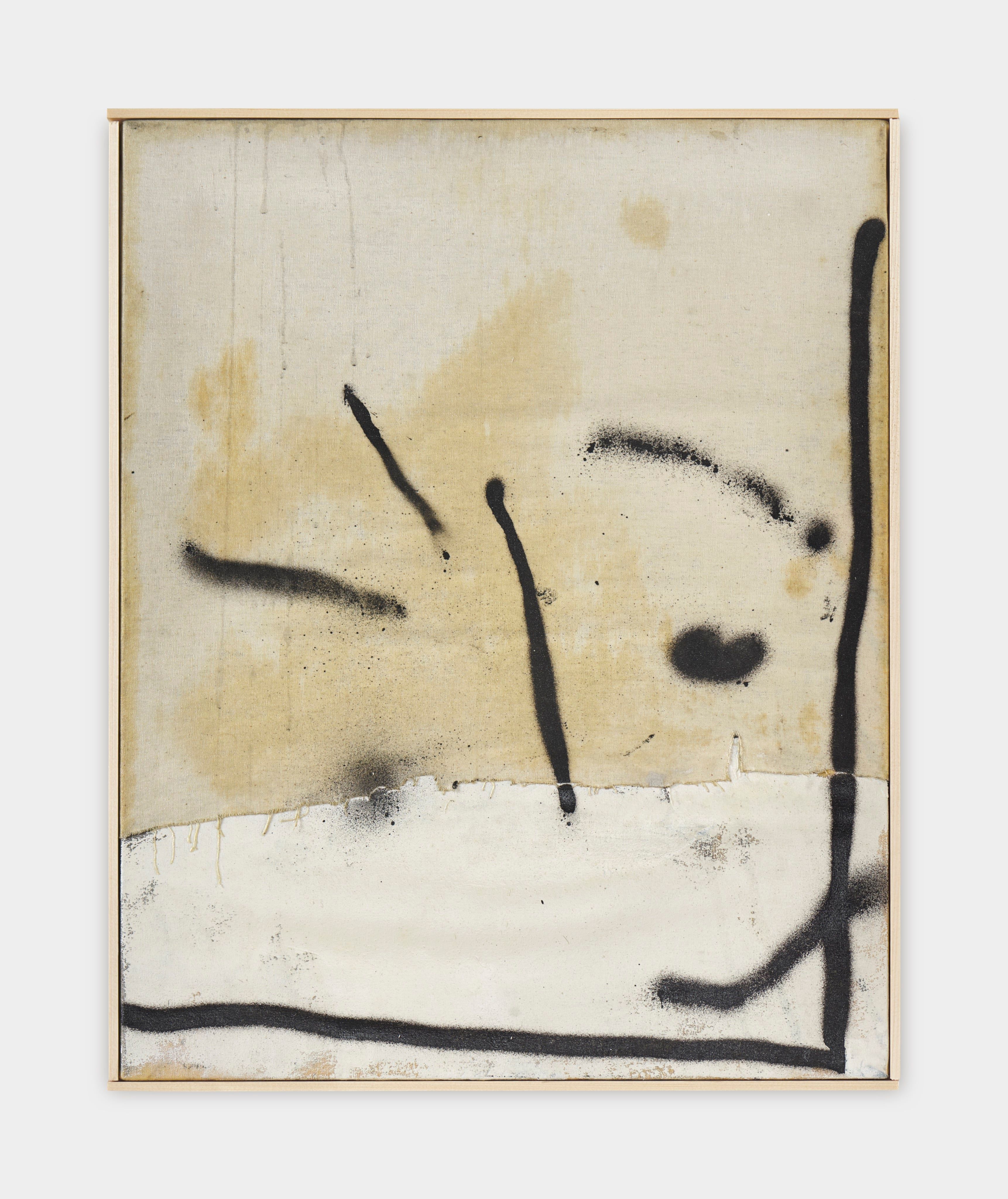
In the past three years, you spent a lot of time in the studio and did not exhibit as much as before. Was this a deliberate choice?
It took me one year to prepare myself to become a father. Two years prior to the birth of our son, we had to find a daycare for him, and now I am basically raising him as a single parent because my girlfriend is working full-time. My son is almost two years old now and paints my pictures. This is less embarrassing than me claiming to have painted them myself.
I guess you don’t feel any pressure towards these upcoming shows then?
No, I do.
You’re a strong figurative painter, yet you chose abstraction as your primary means of expression. Why?
I’m mainly interested in things that I have never seen before and that manage to surprise me.
Do you feel that your lines and painterly gestures have turned towards a slightly more figurative approach?
It does happen that something from the past reappears, that is true. Lately, I have started to combine older figurative work with my current paintings.
Do you ever get bored of your work?
I sit around my studio a lot and stare at my paintings: so, yes, it does indeed get boring sometimes.
If you could create an architectural space for art, what would that, ideally, look like?
Lit.
The international art scene resides in London, Berlin, New York, a city in which you have also lived for some time. Yet, Cologne has always been the city where you live and work. What does the city offer you that you don’t find elsewhere?
I was born and raised in Cologne, my family and friends live here, and the city is unpretentious and neat. The gastronomy is dreadful. There are only two good restaurants in town. Carnival is basically every day, now also in the summer. There are bachelor parties on mobile beer carts, and even the Rhine is a one-way street. There’s a saying in the local dialect: “Cologne is a feeling” (Kölle du bes e Jeföhl).
David Ostrowski, “The Warsaw Pavilion,” is on view at Galeria Wschód from October 27 until December 15.
Credits
- Text: Anneli Botz
- Photography: Mareike Trocha, copyright David Ostrowski
